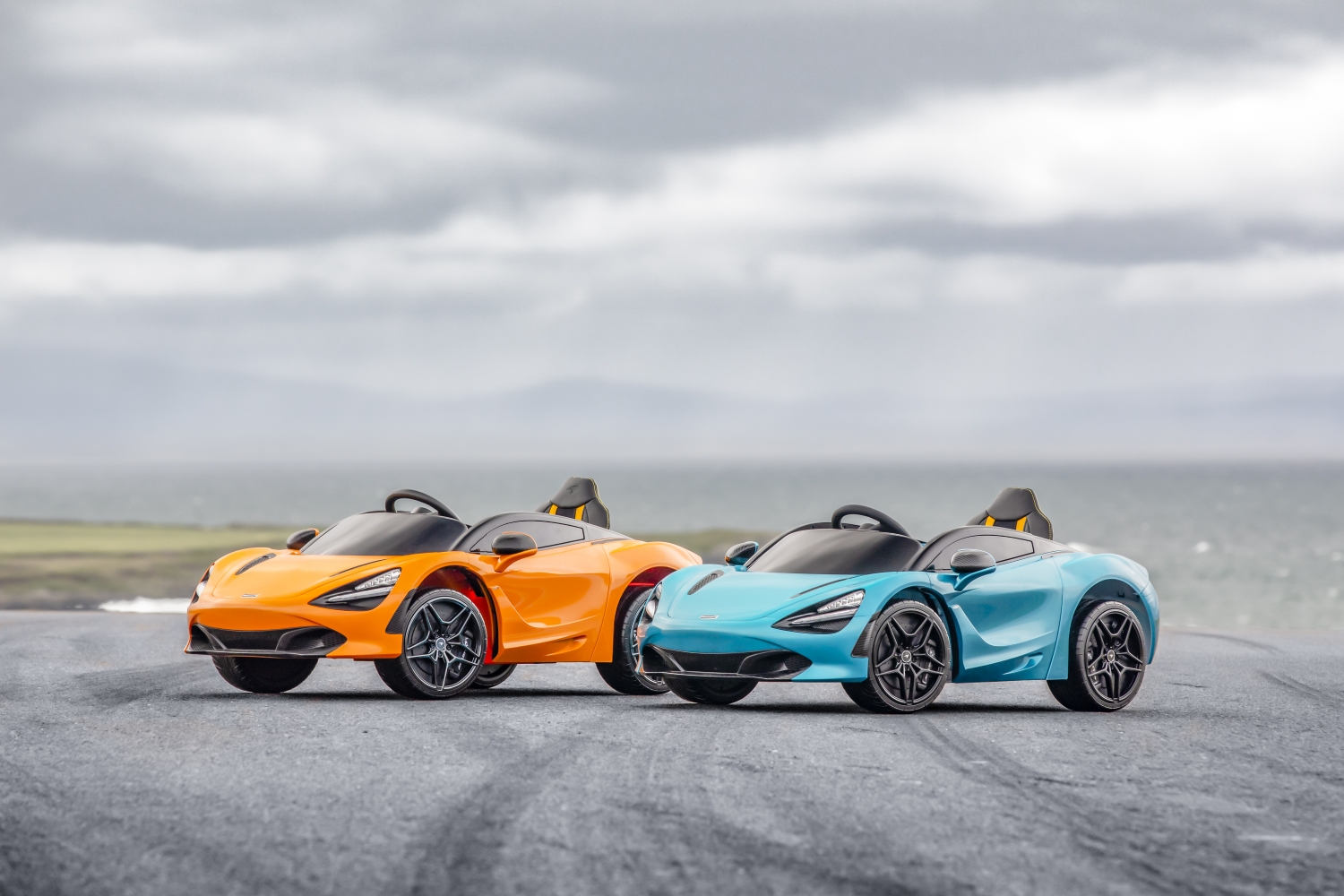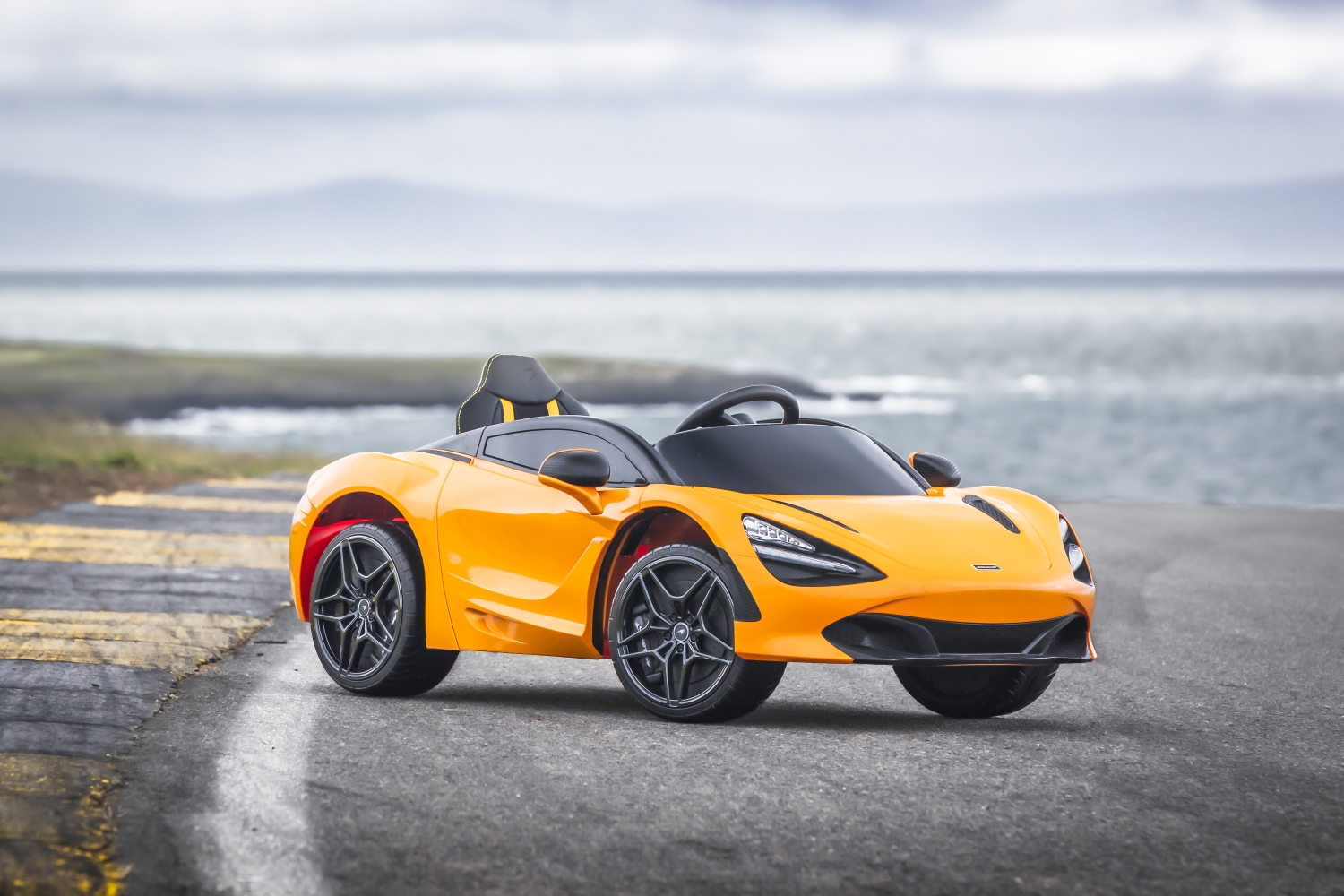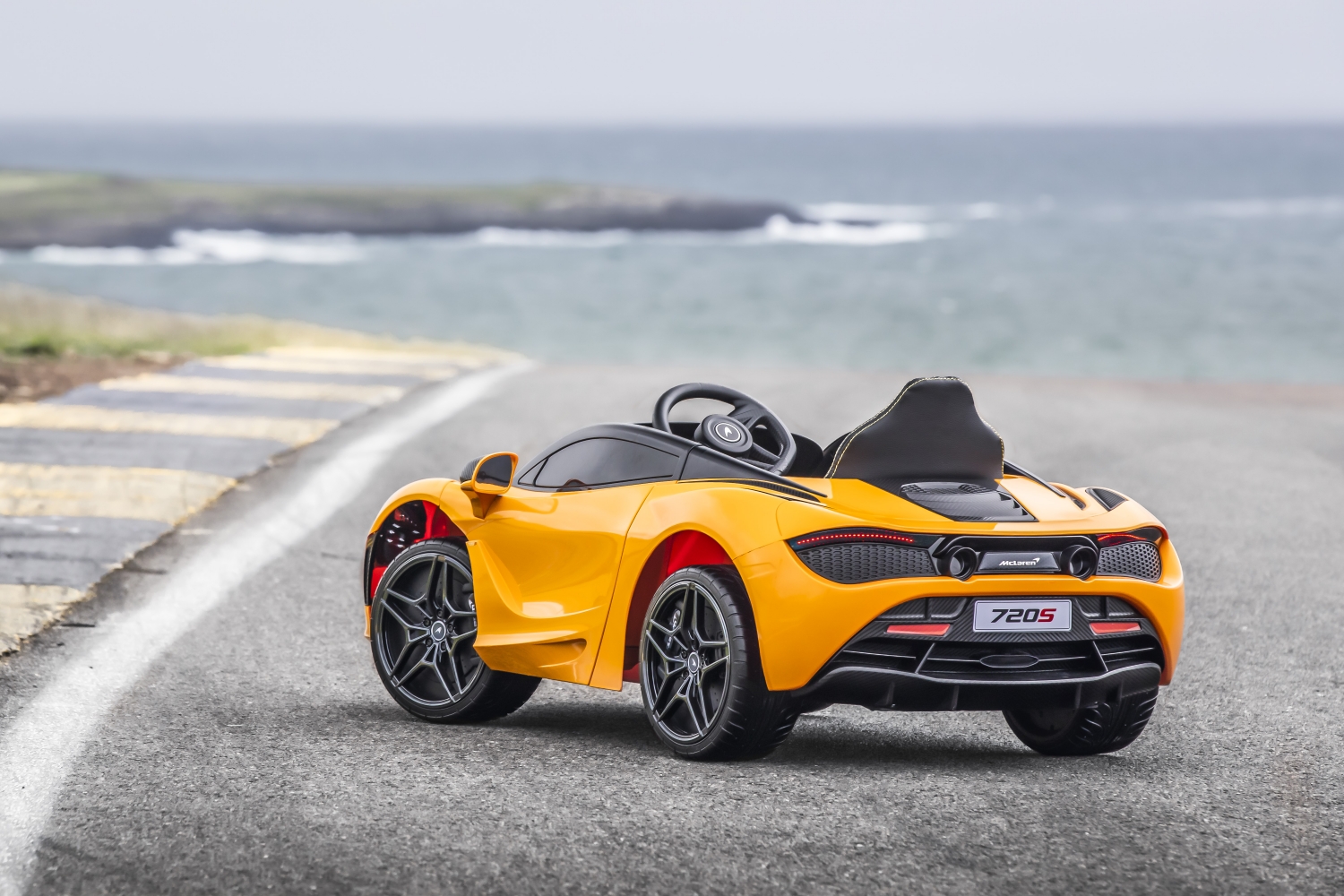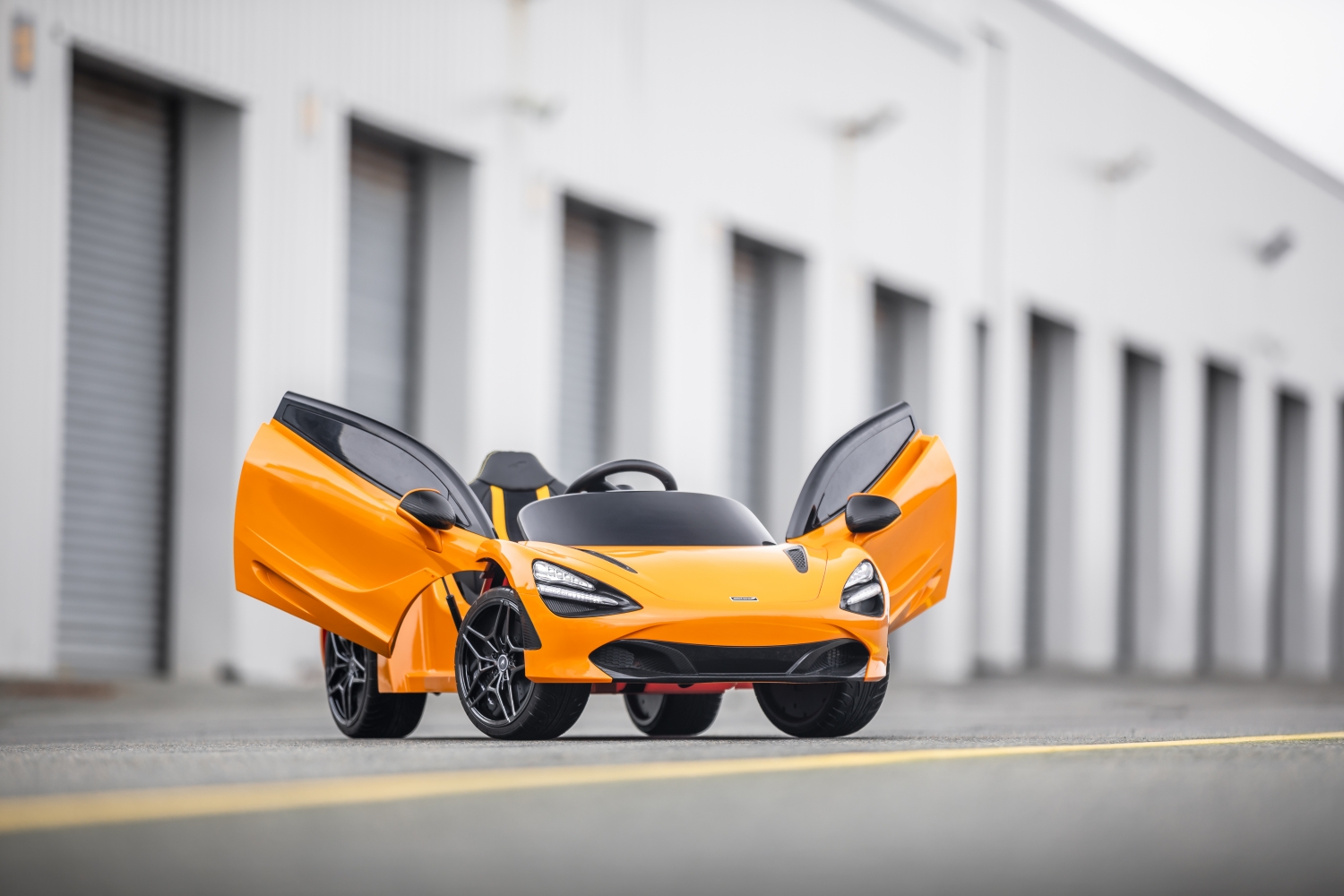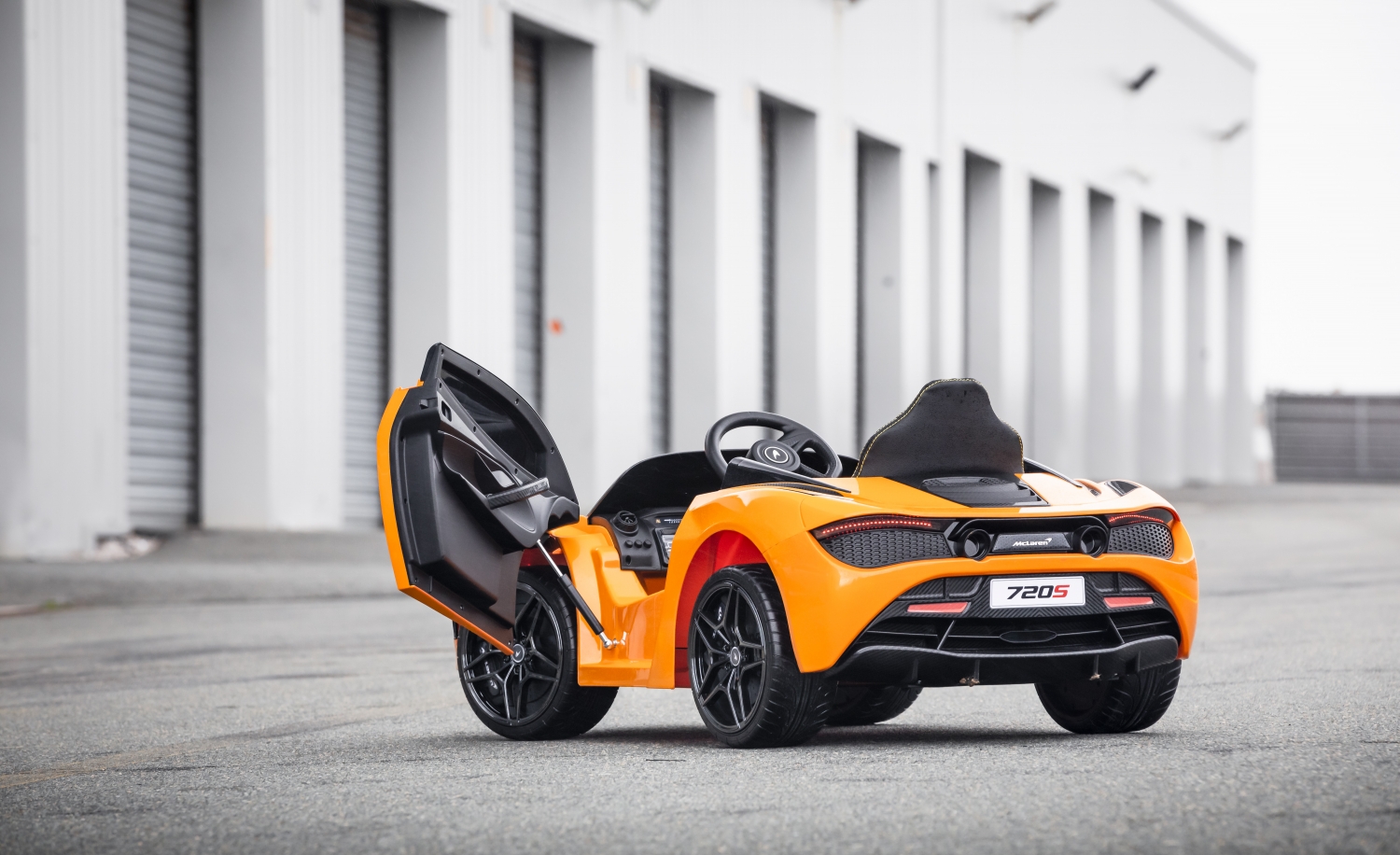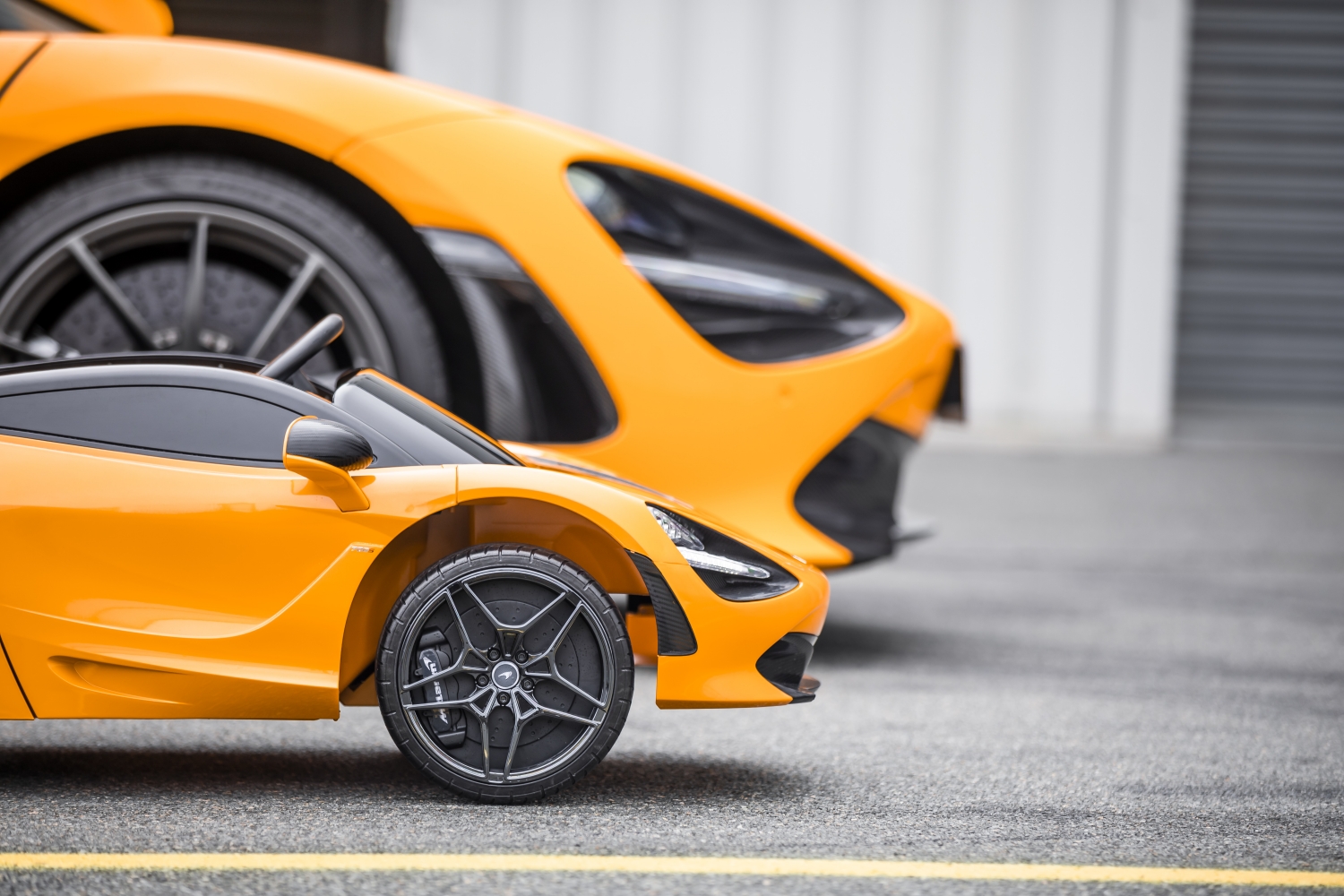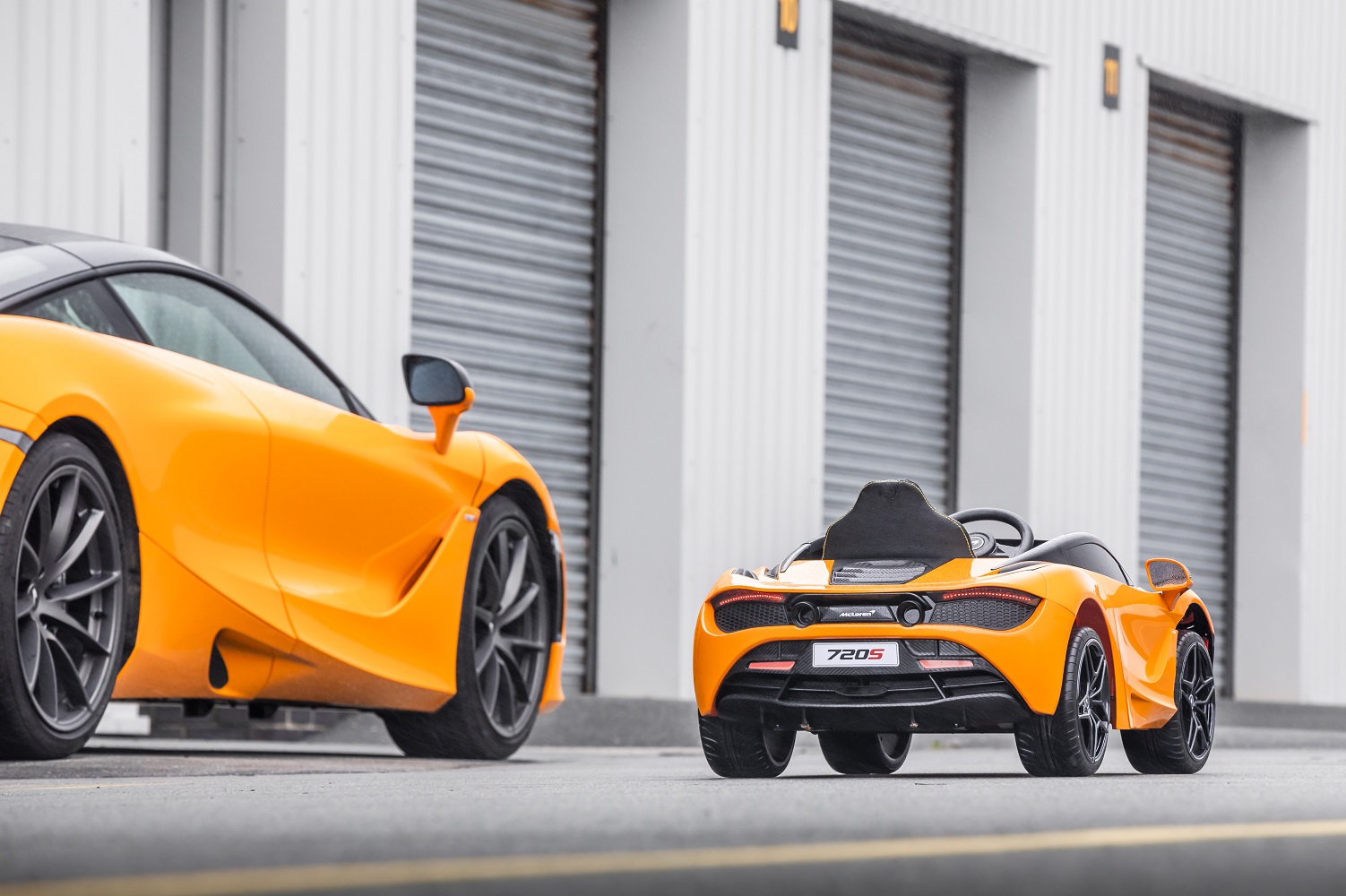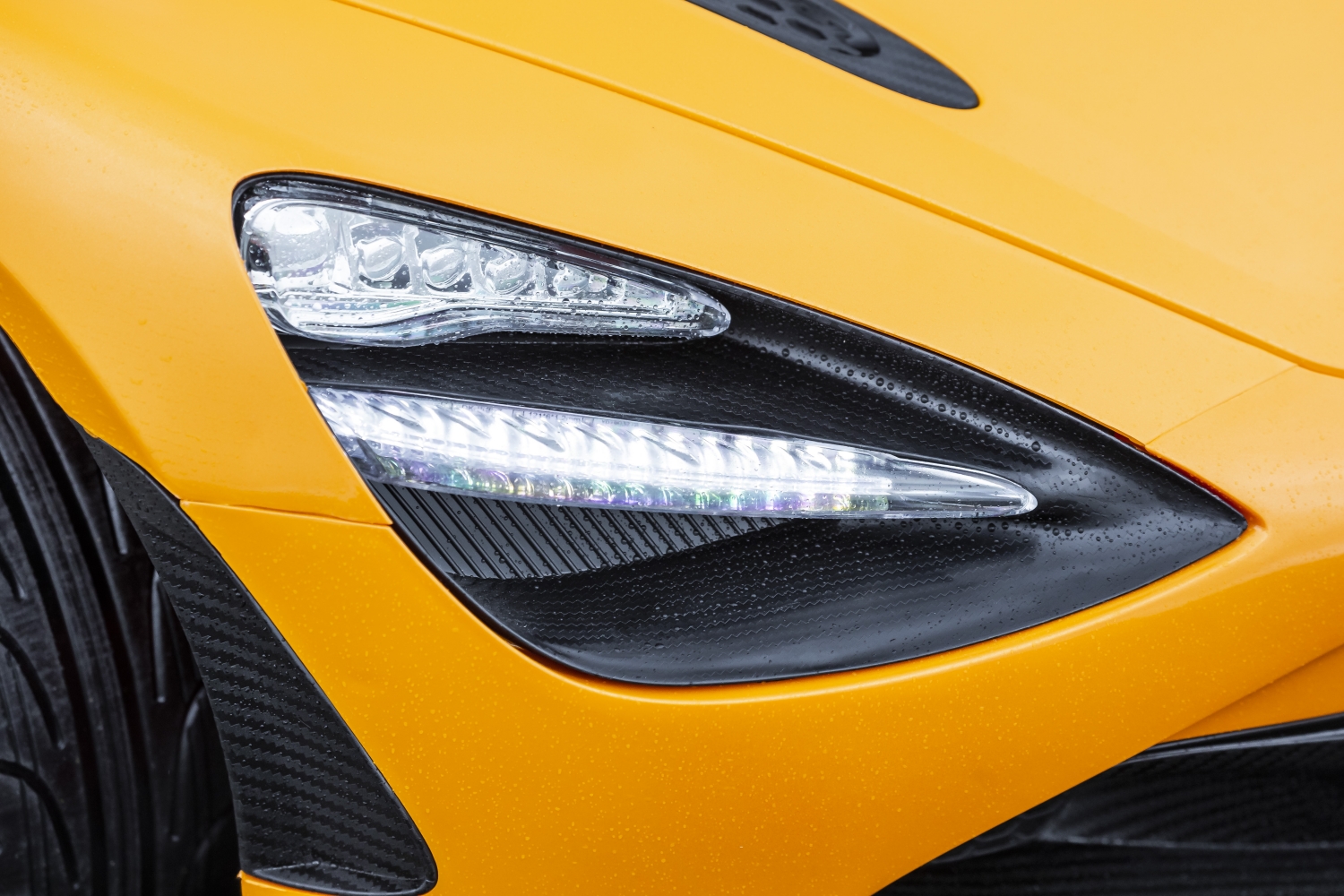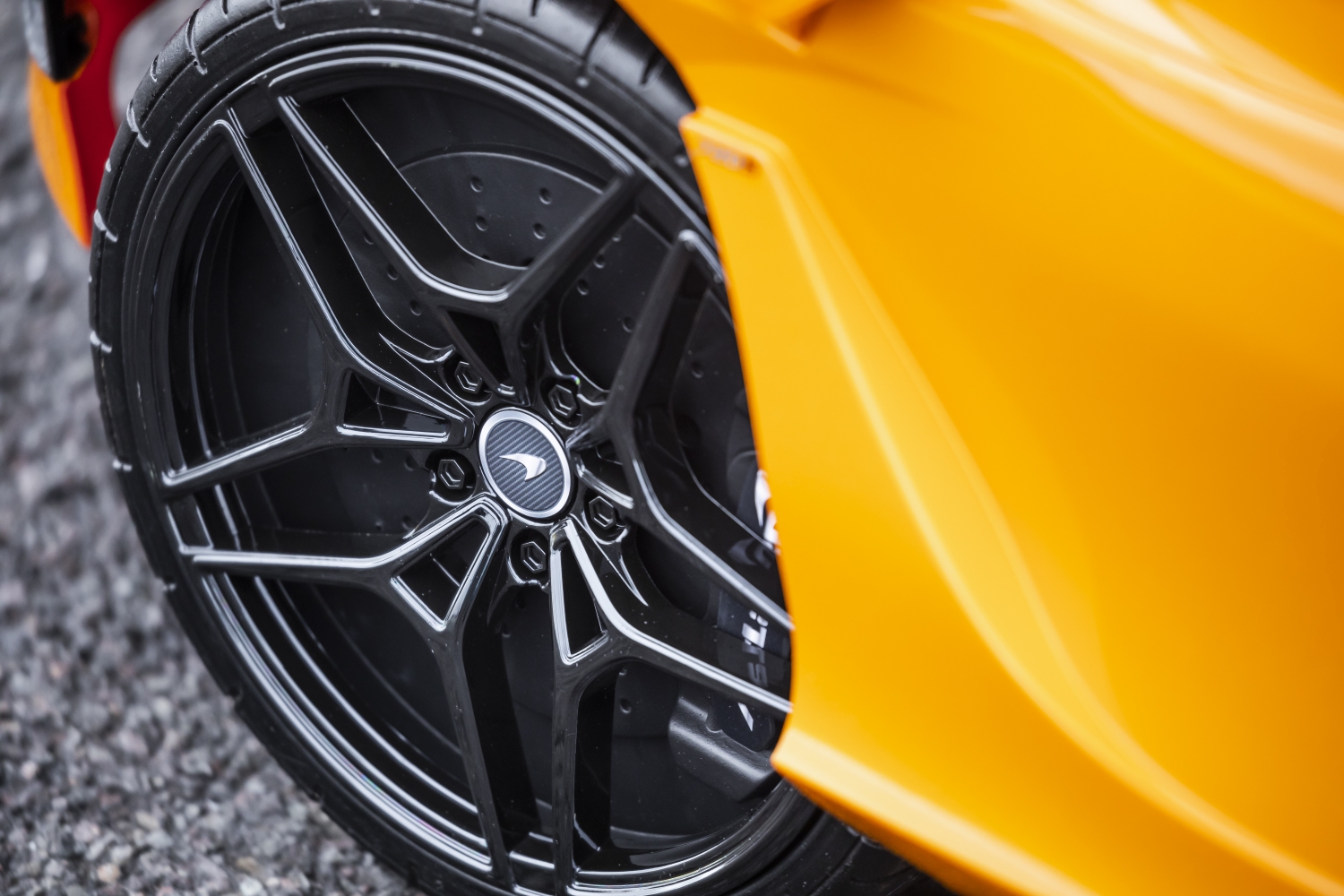McLaren has introduced an electric sports car, but it’s not the kind that will put Tesla on notice — unless the two firms want to battle for bragging rights in the kiddy car segment. The British firm scaled down its 720S into a battery-powered Ride-On toy for kids between the ages of 3 and 6.
It looks just like the real thing, and details like the headlights are shockingly realistic. Even the trick dihedral doors have trickled down from the series-produced model. While it’s not made of carbon fiber for obvious cost reasons, the color palette takes authenticity to the next level. Buyers can choose from one of seven shades available in the McLaren portfolio, including eye-catching Azores orange and a heritage-laced hue called papaya spark. Those who want to keep a low-profile as they ride around the block can select onyx black or saros gray.
Power comes from a single electric motor, but McLaren hasn’t released its specifications. The company did note that the motor is connected to a functional accelerator pedal, and an engine sound synthesizer pumps the real car’s sweet-sounding V8 soundtrack through speakers to give toddlers their first supercar experience. There is even a key to start the motor, though the Ride-On comes with a remote control for semi-autonomous driving (or, depending on your perspective, parental supervision and interference).
Tech is a big part of every McLaren, and the 720S Ride-On is no exception. The screen embedded into the dashboard provides key information about the car and its surroundings, like how much electricity is left in the battery. It also displays an infotainment system that comes pre-loaded with songs popular among 6 year olds. Drivers can listen to their own tunes — and even watch a movie — by inserting a USB drive or an SD card.
The McLaren 720S Ride-On starts at 315 British pounds, a sum that converts to approximately $400 U.S. It’s available to order now through select toy stores in England and abroad. Enthusiasts who want a life-size McLaren powered by an electric powertrain will need to wait. The company began putting an electric test mule through its paces in 2017, but it conceded the technology isn’t ready for mass production yet.
Editors' Recommendations
- Bowers & Wilkins and McLaren launch special-edition Px8 headphones
- McLaren applies F1 tech to health care, air-traffic control, Wi-Fi, and athletics
- The recently revealed McLaren GT is a road trip-ready supercar

